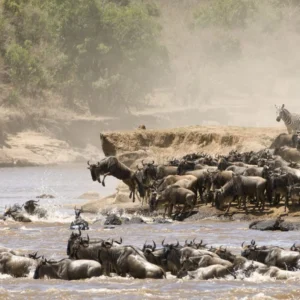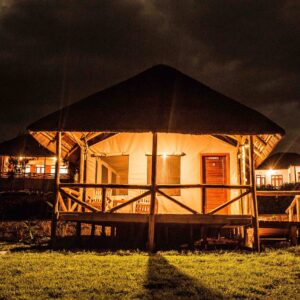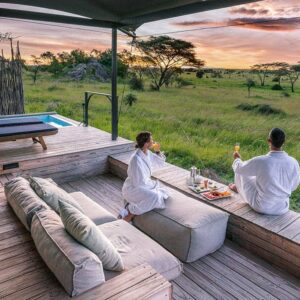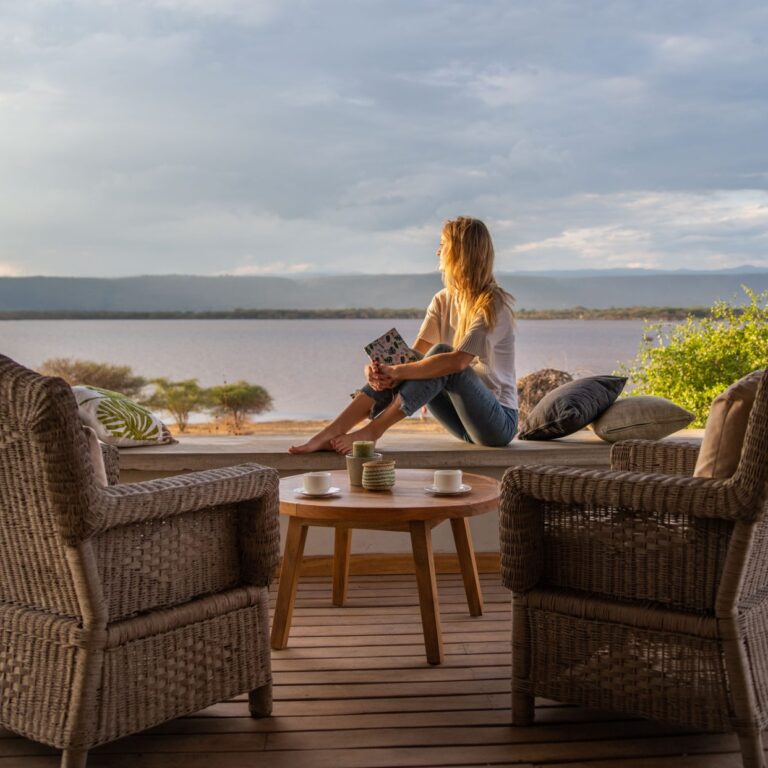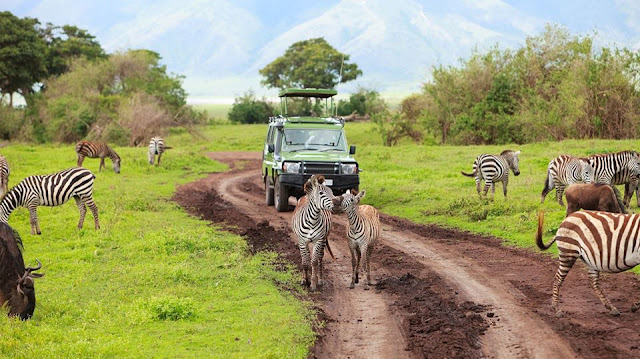Mount Kilimanjaro, “The Roof of Africa,” stands as an alluring challenge, drawing adventurers from every corner of the globe. Its fame as the world’s highest freestanding mountain and one of the “Seven Summits” often leads to the question: Can anyone climb it? While Kilimanjaro is often described as a “walk-up” peak, meaning it doesn’t require technical climbing skills, the answer is a nuanced one. It’s accessible to a broad range of people, but successful ascent depends heavily on several crucial factors beyond mere will.
Yes, anyone with a reasonable level of fitness can climb Mount Kilimanjaro, although it’s not an easy trek. The biggest challenge is the altitude and the need for proper acclimatization. Most people climb with a registered tour operator, who provides guides, porters, and necessary equipment. While not impossible, climbing Mount Kilimanjaro while unfit significantly increases the risk of failure and injury. A good level of fitness is recommended, and while you don’t need to be an athlete, being able to comfortably hike for extended periods with a weighted pack is crucial.
1. Fitness Level: More Than Just Being “Active”
While you don’t need to be an elite athlete or a seasoned mountaineer, a good level of physical fitness is absolutely essential. Kilimanjaro is a multi-day trek, involving continuous uphill and downhill walking for 6-8 hours daily, often at challenging angles. Endurance is Key. Focus your training on cardiovascular endurance. Regular long walks or hikes, especially with a weighted daypack, cycling, and swimming, are excellent preparations. Aim to be comfortable walking for extended periods on consecutive days. Hill Training. Incorporate hill repeats, stair climbing, or incline treadmill sessions to simulate the constant ascents and descents you’ll encounter on the mountain. Strength and Core. Strong legs and a solid core will support you, particularly on the grueling summit night. Squats, lunges, and core exercises are beneficial.
Many people underestimate the cumulative fatigue of days of trekking. Being able to comfortably hike for 6-7 hours a day for a week straight is a good benchmark.
2. Altitude: The Ultimate Decider
Altitude, not fitness, is the primary reason climbers fail on Kilimanjaro. Uhuru Peak stands at 5,895 meters (19,341 feet), where oxygen levels are roughly half that at sea level. Acute Mountain Sickness (AMS) can affect anyone, regardless of fitness, age, or gender. Acclimatization is Paramount. Your body needs time to adjust to the lower oxygen levels. The golden rule is “pole pole” (Swahili for “slowly, slowly”). A slow, steady pace conserves energy and allows your body to adapt. Longer Routes. Choosing longer routes (7, 8, or 9 days) significantly increases your chances of successful acclimatization. These routes incorporate better “climb high, sleep low” profiles, where you gain altitude during the day but descend to a lower elevation to sleep, aiding the acclimatization process.
Symptoms Awareness. Be aware of AMS symptoms (headache, nausea, dizziness, fatigue) and communicate honestly with your guides. They are trained to monitor your health and take necessary action, including descent if symptoms worsen. Medications like Diamox can be discussed with your doctor beforehand.
3. Technical Difficulty: A Trek, Not a Climb
Kilimanjaro is widely considered a non-technical trek. This means you don’t need specialized climbing equipment like ropes, harnesses, ice axes (though trekking poles are highly recommended), or rock-climbing skills. The trails are well-defined and, for the most part, simply involve walking. Scrambling Sections. Some routes, particularly Machame and Lemosho, feature a section called the Barranco Wall, which involves some light scrambling where you use your hands for balance and leverage. This is not technical climbing and is safely navigated by most trekkers. Summit Night Terrain. The final ascent to Uhuru Peak is physically demanding. It often involves walking on loose scree (small, shifting volcanic rocks) and potentially snow or ice near the very top, which can be slippery and exhausting but does not require technical climbing.
4. Preparation: Beyond Physical Training
Successful Kilimanjaro climbs involve comprehensive preparation that extends beyond just physical fitness. Mental Fortitude. The climb is as much a mental challenge as it is physical. Be prepared for discomfort, cold, and moments of self-doubt, particularly on summit night. A positive mindset, resilience, and the ability to push through perceived limits are crucial. Proper Gear. Investing in high-quality, layered clothing is non-negotiable. You’ll experience extreme temperature variations, from tropical warmth to sub-zero arctic conditions. Well-broken-in waterproof hiking boots, a warm sleeping bag (-15°C/-20°C rating), and a good headlamp are essential. Hydration and Nutrition. Staying well-hydrated (3-5 liters of water daily) and maintaining a high-calorie intake are vital for energy and to combat altitude effects
5. Safety: A Prioritized Aspect
Safety on Kilimanjaro is paramount and heavily regulated by Kilimanjaro National Park. You cannot climb independently; you must be accompanied by a licensed guide and a full support crew (porters, cook). Professional Guides. Reputable tour operators employ highly experienced guides trained in wilderness first aid and altitude sickness recognition. They carry emergency oxygen and pulse oximeters to monitor climbers’ vital signs daily. Evacuation Plans. Good operators have clear evacuation procedures in place, which may include stretchers for descent or, in severe cases, helicopter rescue services. Ethical Operators. Choose operators that prioritize porter welfare, provide fair wages, and proper gear for their entire crew. Ethical operations often correlate with higher safety standards.
6. Routes: Choosing Your Path to the Summit
There are seven official routes to Kilimanjaro’s summit, each varying in length, scenery, and acclimatization profile. Higher Success Rates. Routes like Lemosho (7 or 8 days) and the Northern Circuit (8 or 9 days) offer the best acclimatization and, consequently, the highest summit success rates (often 85-95%+). They are also known for their scenic beauty. Popular, but Shorter. Machame (6 or 7 days) is very popular and offers good “climb high, sleep low” opportunities. Marangu (5 or 6 days), often called the “Coca-Cola” route, is perceived as the easiest due to hut accommodation, but its shorter duration makes it have the lowest success rates (as low as 50-60%). Your Choice Matters. Selecting a route that aligns with your fitness level, time availability, and especially, prioritizing more days on the mountain for acclimatization, directly impacts your chances of success.
7. Best Time to Climb: Maximizing Favorable Conditions
While Kilimanjaro can be climbed year-round, certain periods offer more favorable weather, impacting comfort and views. Dry Seasons. The main dry seasons are December to mid-March and mid-June to October. These months offer clearer skies, less rain, and better visibility, making for a more enjoyable experience and better photo opportunities. Shoulder Seasons. April-May and November are rainy seasons. While they offer fewer crowds and unique misty landscapes, they come with muddy trails, reduced visibility, and a higher chance of being wet and cold, which can lower success rates.
8. Cost: An Investment in Adventure and Support
Climbing Kilimanjaro is not a budget trip due to national park fees, staff wages, and logistics. Prices typically range from $2,000 to $6,000+ USD per person. Fixed Costs. A significant portion of the cost goes towards mandatory park fees (conservation, camping/hut, rescue), guide and porter fees, and government taxes. Operator Quality. The remaining cost covers guide and porter wages, food, equipment (tents, cooking gear), transport, and pre/post-climb accommodation. Be wary of extremely cheap operators, as they often cut corners on staff welfare, food quality, or safety equipment.
9. Success Rate: A Reflection of Preparation
Official success rates vary widely depending on the route and duration chosen, but generally, they hover around 60-75% for all climbers. Longer Routes = Higher Success. As mentioned, longer routes (7+ days) consistently have much higher success rates (85-95%) due to better acclimatization. Your Preparation Matters. Individuals who train adequately, choose longer routes, and listen to their guides have a significantly higher chance of reaching the summit. It’s a testament to the fact that success is earned through preparation and smart decisions, not just raw physical power.
In conclusion, while the question “Can anyone climb Mount Kilimanjaro?” might elicit a hopeful “yes,” a more accurate answer is: “Yes, many people can, with the right preparation and approach.” It’s a formidable but achievable challenge for those who respect the mountain’s demands, prioritize safety, and commit to the journey both physically and mentally.

